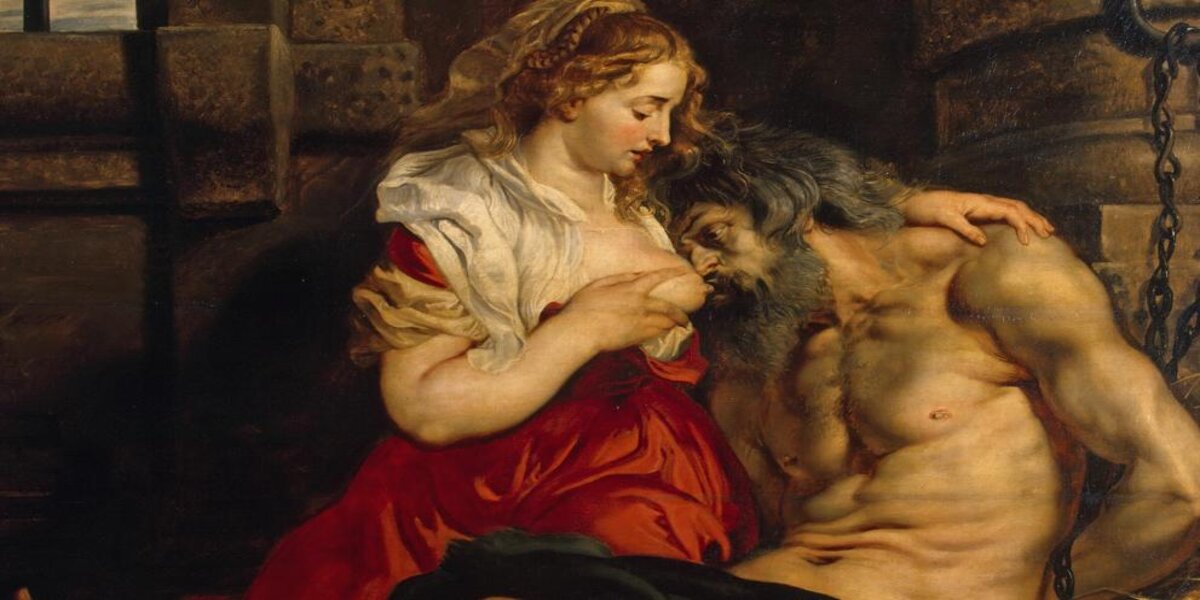A young girl breastfed her father who was condemned to starve to death, the story comes from a legend collected by a Roman historian of the first century.
A young girl breastfed her father, condemned to die of starvation
Having just arrived in Naples, where he had fled from justice for murdering Ranuccio Tomassoni, his partner in crime in Rome, Caravaggio completed The Seven Works of Mercy (1906), a nighttime street scene in which a man with a torch lights the way for a group of caring people who fight against cruelty by helping the poor and the sick.
On the far right of the canvas, an old man sticks his head through a metal grate and suckles a young woman’s breast. What is this?

The scene comes from a legend collected by the 1st century Roman historian Valerius Maximus: Cimon, an old man condemned to die in prison from starvation, manages to escape his fate thanks to his daughter Pero breastfeeding him on the sly.
When the secret is discovered by the jailers, the Roman judges take pity and pardon Cimon, granting him his freedom.
The iconographic theme, known as Caritas romana , was extremely popular during the Renaissance and Baroque periods, and today there are more than three hundred representations of the couple formed by Pero and Cimon in different European museums and collections.
The one by Caravaggio, in the church of Monte Pio Misericordia in Naples, is one of the best known, together with the two Rubens in the Hermitage and the Rijksmuseum, or the one by Bartolomeo Manfredi in the Uffizi.
The story however would not have been exactly like that, according to a later version by Pliny the Elder (23-79): “A plebeian woman of low position who had just given birth to a child was allowed to visit her mother, who had been locked up in prison as punishment, and the warden always inspected her beforehand to prevent her from bringing food.
She was discovered giving her mother sustenance from her own breasts. In consequence of this marvel, the daughter’s pious affection was rewarded by the mother’s release, and both received maintenance for life.”
The story would have actually featured a mother and daughter, according to Pliny the Elder

But although there are numerous drawings and engravings, the mother-daughter couple has hardly been echoed in painting, which with the change of sex introduced, under the alibi of filial piety, an incestuous note, eroticized the body of the lactating woman and eliminated a possible homosexual connotation, which was perhaps more problematic.




